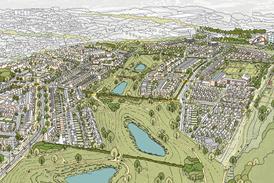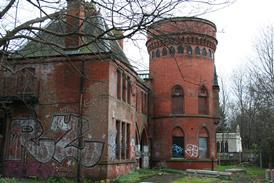Looking back at research from the 1990s and comparing it with today’s data, David Rudlin explores the persistent failure of site allocations to deliver housing

One of my concerns following the demise of URBED was to rescue the archive. Much of it was digital, but there were around 300 box files that I have, ever since, been trying to find somewhere to store.
Last week I was moving the boxes into my attic, wondering why I was doing this and whether I would ever look at them again. Then, out of a box spilled an old report that made me realise why these things are important and why the arguments on housing numbers never change.
I had thought that the report was lost, I certainly don’t have it digitally. It was called Tapping the Potential and had been commissioned by the Department of the Environment, Transport and the Regions (now MHCLG).
It is true, there is a copy on the website, now hosted by the URBED Trust, but this is the sanitised version, essentially just the appendix of the original report including the guidance on housing capacity. What had just dropped out of the box was the original, before most of the text had been removed by horrified civil servants.
This was 1999, just a month after the publication of the Urban Task Force Report. The government had a target that 60% of new homes should be built within urban areas, and many local planning authorities just didn’t believe that this was possible. We had therefore been commissioned to develop a methodology to measure the housing capacity of urban areas.
We found research from the 1990s showing that only 39% of new housing was being built on allocated sites
In the first, unredacted version of the report, I had done a deep dive into the whole system of housing allocations and realised that it made no sense. I’m not sure that it makes any more sense today.
The essential problem was this: local authorities were required to identify a five-year housing supply in their plans. This they did by allocating land that they could show was ‘genuinely available’ for development, and then making a windfall assumption for housing built on unallocated sites (generally 15–20%).
However, we found research from the 1990s showing that only 39% of new housing was being built on allocated sites. We concluded: ‘local plans have been successful in identifying sufficient housing land to maintain a five-year supply, but this has not generally been the land on which housing has been built’.
The government at the time were focused on why the allocated sites had not been developed. We found another study suggesting that in 73% of cases the problem was viability. The policy response was therefore to tighten the definition of ‘genuinely available’ to make it harder to allocate sites if there was any uncertainty about viability.
We, however, were much more interested in the 61% of housing that was being built on unallocated sites, which seemed to call into question the whole system.
I have been digging around to see whether the same issue applies today. I came across a 2020 survey by the Local Government Association that estimated that there were one million homes that had been allocated in local plans but which were not being developed (no planning permission or discussions with developers).
The LGA report concluded: ‘this amounts to an additional 4.4 years’ worth of housing supply on top of the 5 years of housing land supply many councils can demonstrate’.
What I can’t find is data on the percentage of housing being built on unallocated land. The assumption is that the one million homes that have been allocated but not built have just disappeared, which would explain why our housing figures are below where we want them to be.
Why don’t we just say ‘these are the places where we won’t allow housing’
However, is it possible that they are being built elsewhere? The housing output in 2020 was, after all, higher than the output in the late 1990s.
There is research done on this locally. The NPPF says that windfall assumptions must be ‘realistic and evidence based’, and the percentage used in local plans must be based on ‘compelling’ evidence that such sites have consistently become available.
There is a policy assumption that windfall assumptions are a cop-out, a way for local authorities to avoid difficult decisions about allocating sites. No planning authority could get away with a 50% windfall assumption.
Windfall studies therefore err on the side of caution. Historic windfalls are seen as one-offs, and it is assumed that historic rates won’t continue into the future, so that discounts are applied and lower figures are used.
Of course, if more than half of homes are being built on unallocated sites, we might want to question the whole process of site allocations. It does, after all, take up a huge amount of time in the planning system and is the source of endless arguments and litigation.
Why don’t we just say ‘these are the places where we won’t allow housing’ (the green belt, sports fields, employment sites etc…), and say that everywhere else is agreed in principle as being suitable for housing? Go for it, subject of course to a design code regulating how it is built.
Postscript
David Rudlin is founding principal of Rudlin & Co and visiting professor at Manchester School of Architecture.
He is a co-author of High Street: How our town centres can bounce back from the retail crisis, published by RIBA Publishing.
















1 Readers' comment